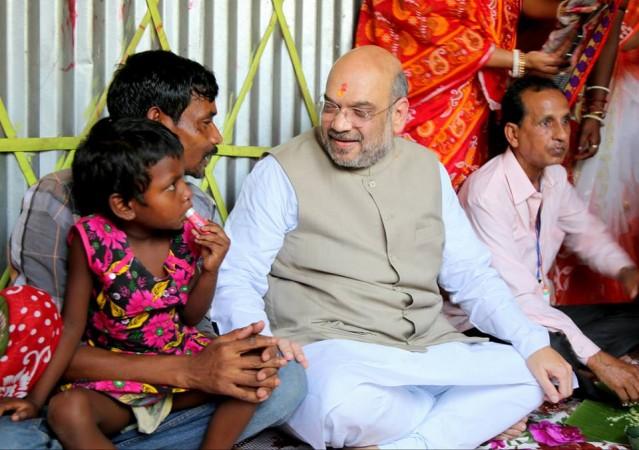
BJP president Amit Shah on Tuesday, September 12, said in an interview that his party is confident of toppling Mamata Banerjee from the seat of power in the electoral battles ahead. He said the BJP will form a majority government in West Bengal bringing an end to the "misrule" of the Trinamool Congress (TMC) in the state.
Shah, on the other hand, was also not impressed with the way the state chapter of the BJP has progressed in expanding the party's network in the state. The party's central leadership had asked the state leaders to find out 294 'vistaraks' (persons who would be sent to each of the 294 state constitutions where they would work untiringly to strengthen the party) but when Shah reached Kolkata, he could see only 78.
The top brass had also sought 42 'Lok Sabha Palaks' for each parliamentary constituency in the state but in effect, the state leadership could produce only 21 of them. Shah was naturally not happy with such progress and was also not convinced by the logic that the terror "unleashed" by the ruling party had disrupted the BJP's plans. Shah said a strong organisation was needed to combat terror.
This is a peculiar chicken or egg first dilemma for the BJP in Bengal. Shah knows very well that to defeat Mamata in her own den, he needs a superfit organisation with an equally robust local leadership. As of now, none of the two is visible. The BJP has been doing good in the state of late in terms of vote shares because the Left's vote-bank is now fleeing to its fold. But Amit Shah knows finishing second in the elections is as good as finishing third or last for it is only the winner that matters in electoral battles.
Toppling the Left or the Congress is not really a big feat for the BJP for the TMC remains the force to beat and despite the Narendra Modi wave, the BJP has not succeeded in making much of an inroad into the TMC's fortress, especially in South Bengal where the powerhouse is. Both in the 2014 Lok Sabha and 2016 Assembly elections, the saffron party could win just one seat in the southern parts where the TMC has an overwhelming dominance. How can Shah turn the game there?
Shah should take a note from Bengal's politics in the past. In 1977, the Left had replaced the Congress after the latter ruled for a long, long time (excepting the two brief United Front governments in the late 1960s and early 1970s) and it was not only the failure of the central government under Indira Gandhi and the state government led by Siddhartha Shankar Ray but also because of a strong Left which had strong organisation, programme and leadership.

In 2011 Mamata Banerjee toppled the Left after its non-stop rule of 34 years and on this occasion, Banerjee's leadership made an impact even though her party's organisation was not strong. The Left's ageing leadership and decline in the heart of the civil society also contributed to the change.
Today, the chances of the BJP to replicate the performance of either the Left or the TMC are less for a number of reasons. First, unlike the Congress or the Left, Mamata Banerjee hasn't completed a long tenure in office still and to expect a major anti-incumbency against her now might not be apt.
Secondly, the BJP doesn't have a face to match the chief minister who, despite all the odds, is still the only the mass leader in Bengal. The likes of Roopa Ganguly and Locket Chatterjee are no match for Banerjee no matter how much they shout in media. The TMC supremo's grip on the ground is still far too strong for the BJP to challenge and it was seen in 2016 when she single-handedly pulled her party through amid the Saradha and Narada corruption charges.
Shah's strong claims of dislodging Banerjee and also feeling unhappy with the BJP's groundwork in Bengal are contradictory. But the man is feeling compelled to show a determined face against Banerjee's regime because that's the only way by which the BJP's potential vote-bank can be kept in a good humour. As far as the real work on the ground is concerned, the BJP still has several miles to conquer.

















